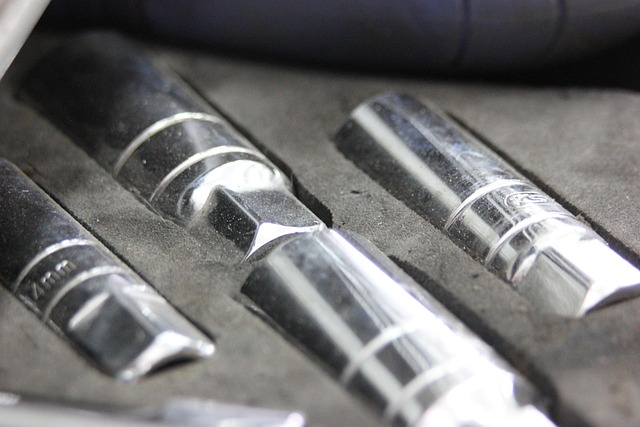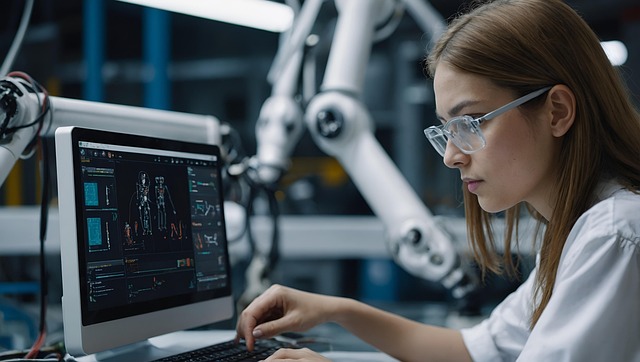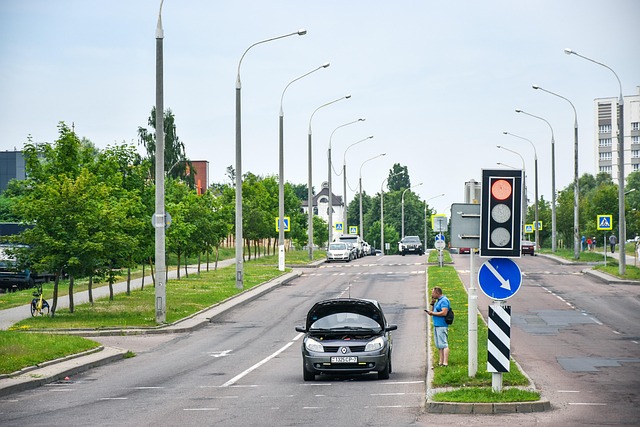Navigating Auto Body Collision Center Visits: Repairs, Experience, and Aftercare
A visit to an auto body collision center begins with a thorough initial assessment by skilled techni…….
Welcome to an in-depth exploration of the vital component within the automotive industry—the Auto Body Collision Center. This article aims to shed light on these specialized facilities, their role in repairing and restoring damaged vehicles, and their growing significance globally. By delving into various aspects, from historical context to technological advancements, we will uncover the multifaceted world of auto body collision centers and their impact on both industry and society.
Definition: An auto body collision center, also known as a vehicle repair or crash center, is a specialized automotive facility equipped to handle the structural repair and restoration of motor vehicles involved in collisions or accidents. These centers are designed to accurately align and replace damaged components, ensuring vehicles return to their pre-incident condition or even enhance safety features.
Core Components:
Historical Context: The concept of auto body collision centers traces back to the early 20th century as automobiles became more prevalent on the roads. With increasing traffic accidents, the demand for efficient vehicle repair grew. Traditional garages often struggled to handle complex structural repairs, leading to the specialization of body shops. Over time, these evolved into modern collision centers, adopting new technologies and techniques to enhance repair accuracy and safety standards.
The influence of auto body collision centers extends far beyond their physical locations, shaping the automotive industry globally. Here’s a glimpse at their international impact and evolving trends:
Global Market Reach: Auto body collision centers operate in nearly every country, catering to local vehicle ownership and insurance demands. Major cities worldwide host bustling hubs of these facilities, serving both personal and commercial vehicles.
Regional Differences: The density and types of collision centers vary across regions. For instance, North America has a high concentration of advanced facilities due to stringent safety standards, while Asia-Pacific markets are witnessing rapid growth in specialized repair centers to support their booming automotive sector.
Technological Adoption: Global trends show a unified move towards digital transformation. Collision centers are integrating AI, machine learning, and AR/VR technologies for improved diagnostics, training, and customer engagement. This ensures that vehicle repairs keep pace with digital advancements in the automotive industry.
The economic significance of auto body collision centers is profound, affecting various sectors within the global economy:
| Economic Aspect | Description |
|---|---|
| Market Size | The global auto repair market, including collision centers, was valued at approximately $600 billion in 2021 and projected to grow at a CAGR of 5-7% by 2028. This growth is driven by factors like increasing vehicle ownership, aging fleets, and rising demand for specialized repairs. |
| Employment | These centers employ a substantial workforce, including technicians, estimators, administrators, and support staff. According to industry reports, there were over 1.5 million auto body repair jobs globally in 2020. |
| Economic Growth | Auto body collision centers contribute to economic growth by generating revenue from repairs, parts sales, and associated services. They also stimulate local economies through employee spending and business partnerships. |
| Insurance Perspective | Insurance companies heavily rely on collision centers for authorized repairs, ensuring vehicle safety and maintaining policyholder satisfaction. Efficient collaboration between insurers and these facilities streamlines claims processing. |
The auto body collision center landscape is characterized by rapid technological innovation, driving efficiency, precision, and customer satisfaction to new heights:
Computerized Estimation Software: Advanced estimation tools enable technicians to quickly and accurately assess damage, generate repair estimates, and communicate with customers. These systems integrate with vehicle databases to fetch real-time part prices and labor rates.
3D Imaging and Laser Scanning: This technology captures precise 3D models of vehicles, facilitating detailed damage analysis and ensuring exact repairs. It is particularly useful for complex geometry parts, such as car bodies and fenders.
Robotic Welding and Assembly: Robotic systems enhance precision welding, improving the quality and consistency of repairs. They can handle intricate weld patterns and ensure structural integrity, especially in high-volume production environments.
Digital Paint Matching: With the advent of computer-aided paint systems, collision centers can precisely match vehicle paint colors, ensuring an indistinguishable finish after repairs. This technology has revolutionized color accuracy in the automotive industry.
Governing bodies worldwide play a crucial role in shaping the operations of auto body collision centers through policies and regulations, primarily focusing on safety and environmental considerations:
Safety Standards: Organizations like the National Highway Traffic Safety Administration (NHTSA) and European Union (EU) regulatory bodies set safety standards for vehicle repairs. These standards dictate the minimum requirements for equipment, training, and facility maintenance to ensure safe working conditions and effective damage restoration.
Environmental Regulations: Collision centers must adhere to environmental protection laws regarding the handling of hazardous materials, such as solvents, paints, and automotive fluids. Proper disposal and recycling protocols are essential to minimize ecological impact.
Licensing and Certification: Many regions mandate that collision center technicians obtain specialized licenses or certifications. These ensure a certain level of competence and knowledge in vehicle repair technologies and safety practices.
Consumer Protection: Consumer protection laws safeguard customers’ rights, requiring transparent pricing, fair business practices, and written estimates for repairs. These regulations promote trust between consumers and auto body collision centers.
Despite their significance, auto body collision centers face several challenges that impact their operations and growth:
Competition from DIY Repairs: With the rise of online tutorials and accessible automotive repair information, some vehicle owners opt for do-it-yourself (DIY) repairs. This trend can reduce the demand for collision center services, especially for minor damages.
Shortage of Skilled Labor: The industry faces a skilled labor shortage due to aging technicians and a lack of interest from younger generations in pursuing automotive careers. This gap requires targeted training programs and incentives to attract and retain talent.
Rapid Technological Change: Keeping up with the pace of technological advancements can be challenging for smaller collision centers. Investing in new equipment and software may strain budgets, creating a digital divide between facilities.
Environmental Concerns: As regulations tighten, collision centers must invest in eco-friendly practices, which can increase operational costs. Balancing environmental responsibility with profitability is an ongoing challenge.
Strategic Solutions:
GreenTech Collision stands out for its commitment to sustainability and innovation. Located in a dense urban area, this center adopted a comprehensive eco-friendly approach:
Outcomes: GreenTech experienced a 20% increase in customer satisfaction ratings due to its digital convenience and eco-conscious practices. The center also attracted younger, environmentally conscious technicians, contributing to its skilled workforce.
In the bustling metropolis of Tokyo, Tokyo Auto Refinish has achieved success by specializing in high-end vehicle restoration and custom paint jobs:
Impact: Tokyo Auto Refinish has become a renowned destination for automotive enthusiasts seeking exceptional vehicle restoration. Their success lies in combining traditional craftsmanship with modern technology, catering to a niche market and fostering a sense of community among car collectors.
The auto body collision center landscape is poised for significant growth and transformation in the coming years, driven by several emerging trends:
Autonomous Vehicles: As self-driving cars become more prevalent, collision centers will need to adapt their services. Repairs for autonomous vehicles may involve specialized electronic systems and advanced driver assistance technologies (ADAS).
Connected Cars: The rise of connected cars presents new opportunities for collision centers. These facilities can offer diagnostics, software updates, and cybersecurity services as vehicle owners increasingly rely on their cars’ connectivity features.
E-Mobility Growth: With the rapid expansion of electric vehicles (EVs), collision centers will require specialized training and tools for battery pack repairs, electrical systems, and unique body work considerations.
Digital Twin Technology: This technology involves creating digital replicas of physical assets, in this case, vehicles. Collision centers can utilize digital twins for precise virtual repairs, testing, and design simulations before actual work begins.
Auto body collision centers are more than just repair facilities; they are integral to the safety, efficiency, and sustainability of the automotive industry. From their historical evolution to the cutting-edge technologies they embrace, these centers play a vital role in keeping vehicles on the road and drivers protected. As the global auto industry continues its digital transformation, collision centers will remain at the forefront of innovation, ensuring that vehicles meet ever-increasing safety and environmental standards.
Q: How do I choose a reliable auto body collision center?
A: Look for facilities with proper certifications, positive customer reviews, transparent pricing, and experienced technicians. Ask for references and ensure they use reputable parts suppliers.
Q: Will my insurance cover all repair costs?
A: Insurance coverage varies; review your policy to understand what is covered. Collision centers can assist in filing claims, but it’s essential to discuss potential deductibles and out-of-pocket expenses beforehand.
Q: Can I get my car painted at a collision center?
A: Absolutely! Many collision centers offer painting services, utilizing advanced equipment for accurate color matching. This is particularly useful after an accident or for vehicle restoration projects.
Q: How can I ensure my vehicle is restored to its original condition?
A: Reputable collision centers will document the repair process and use original equipment manufacturer (OEM) parts whenever possible. Communication with technicians and regular updates during repairs are essential to maintain transparency and quality.

A visit to an auto body collision center begins with a thorough initial assessment by skilled techni…….

Auto body collision centers provide specialized services for all types of vehicle repair, from minor…….

Auto body collision centers are embracing technological advancements to transform their operations a…….

An auto body collision center provides expert vehicle repair for all accident types, from minor dent…….

At a bustling auto body collision center, efficient insurance coordination and digital systems strea…….

Auto body collision centers provide specialized services to restore damaged vehicles to their pre-ac…….

Before visiting an auto body collision center, define damage extent and specialized services needed……..

Auto body collision centers are essential facilities specializing in vehicle repair and restoration,…….

Auto body collision centers offer paintless dent removal (PDR), a modern, non-invasive car body repa…….

An auto body collision center is your trusted partner in restoring damaged vehicles, offering advanc…….